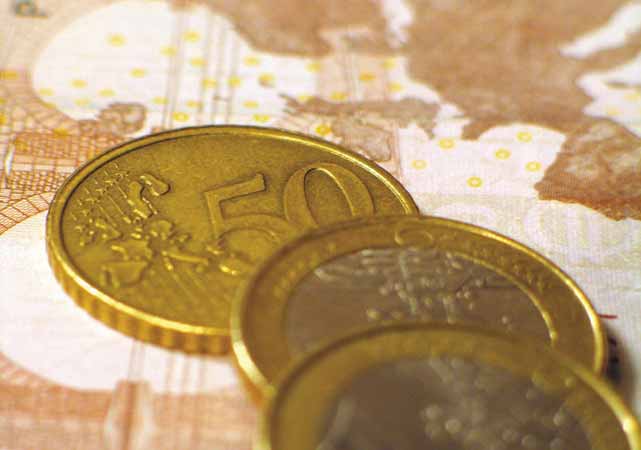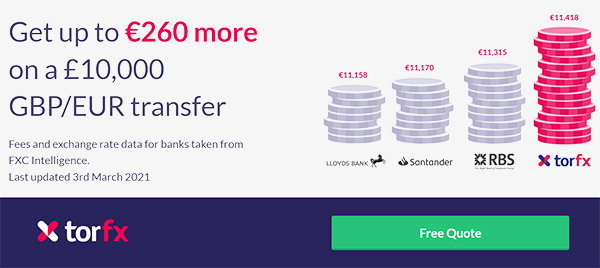Pound to Euro FX Forecast: Near-Term Break Below 1.1630
June 23, 2025 - Written by Ben Hughes

The Pound to Euro exchange rate (GBP/EUR) dipped to 2-month lows at 1.1660 in immediate reaction to the US military strike on Iran’s nuclear facilities before rallying to around 1.1690.
ING commented; “we still think the momentum can remain generally bullish on the pair, and we expect a break above 0.860 in the near term. (GBP/EUR losses below 1.1630)
Both currencies will tend to be vulnerable against the dollar if there is a further deterioration in the Middle East situation and a fresh jump in oil prices.
The relative outlook for the Euro-Zone and UK economies will also be key elements.
Given that the Pound is dependent on high yields to attract capital inflows, speculation over a faster pace of Bank of England rate cuts would undermine the currency.
Danske Bank expects gradual GBP/EUR losses to 1.15 on a 12-month view. It added; “We increasingly see domestic factors and the relative growth outlook between the UK and the euro area as becoming GBP negatives.”
Trade developments will also be significant, especially with a looming July 9th US tariffs deadline.

MUFG commented; “The EU had been holding out for a better deal but there now appears to be a grudging acceptance amongst some EU countries that the current 10% universal tariff is likely to remain in place.”
The latest UK PMI business confidence data was slightly more positive on the UK growth outlook, although it also boosted confidence in an August Bank of England rate cut as inflation pressures faded.
According to ING the key medium-term GBP/EUR level is 1.1480 which was seen in April.
Overall, however, it does not expect GBP/EUR will slide that far unless there is aggressive easing by the Bank of England.
The UK PMI manufacturing index improved to a 5-month high of 47.7 for June from 46.4 and above consensus forecasts of 46.9.
The services-sector index edged higher to a 3-month high of 51.3 from 50.9 and in line with market expectations.
Input prices increased at the slowest rate for three months while output charges increased at the slowest rate for four years.

Chris Williamson Chief Business Economist at S&P Global Market Intelligence commented; Although business conditions have continued to improve since April’s downturn growth of business activity remains disappointingly lacklustre.”
He added; “the picture of near-stalled growth, falling employment and lower inflation opens the door for the Bank of England to cut rates again at its next policy meeting in August.”
The Euro-Zone PMI manufacturing index was unchanged at 49.4 for June and slightly below consensus forecasts of 49.6 while a small improvement in the services-sector index to a 2-month high of 50.0 from 49.7 previously was in line with market expectations.
There were mixed pressures on input costs with strong upward pressure in the services sector and this translated into a faster rate of increase in output charges.
Dr. Cyrus de la Rubia, Chief Economist at Hamburg Commercial Bank, commented; “The eurozone economy is struggling to gain momentum. For six months now, growth has been minimal, with activity in the service sector stagnating and manufacturing output rising only moderately.”
While noting cost pressures and a jump in oil prices, he added; “Overall, however, the ECB can remain relatively calm, as the strong euro and the deflationary effect of US tariffs argue against a short-term rise in inflation.”
STORY LINK Pound to Euro FX Forecast: Near-Term Break Below 1.1630

The Pound to Euro exchange rate (GBP/EUR) dipped to 2-month lows at 1.1660 in immediate reaction to the US military strike on Iran’s nuclear facilities before rallying to around 1.1690.
ING commented; “we still think the momentum can remain generally bullish on the pair, and we expect a break above 0.860 in the near term. (GBP/EUR losses below 1.1630)
Both currencies will tend to be vulnerable against the dollar if there is a further deterioration in the Middle East situation and a fresh jump in oil prices.
The relative outlook for the Euro-Zone and UK economies will also be key elements.
Given that the Pound is dependent on high yields to attract capital inflows, speculation over a faster pace of Bank of England rate cuts would undermine the currency.
Danske Bank expects gradual GBP/EUR losses to 1.15 on a 12-month view. It added; “We increasingly see domestic factors and the relative growth outlook between the UK and the euro area as becoming GBP negatives.”
Trade developments will also be significant, especially with a looming July 9th US tariffs deadline.

MUFG commented; “The EU had been holding out for a better deal but there now appears to be a grudging acceptance amongst some EU countries that the current 10% universal tariff is likely to remain in place.”
The latest UK PMI business confidence data was slightly more positive on the UK growth outlook, although it also boosted confidence in an August Bank of England rate cut as inflation pressures faded.
According to ING the key medium-term GBP/EUR level is 1.1480 which was seen in April.
Overall, however, it does not expect GBP/EUR will slide that far unless there is aggressive easing by the Bank of England.
The UK PMI manufacturing index improved to a 5-month high of 47.7 for June from 46.4 and above consensus forecasts of 46.9.
The services-sector index edged higher to a 3-month high of 51.3 from 50.9 and in line with market expectations.
Input prices increased at the slowest rate for three months while output charges increased at the slowest rate for four years.

Chris Williamson Chief Business Economist at S&P Global Market Intelligence commented; Although business conditions have continued to improve since April’s downturn growth of business activity remains disappointingly lacklustre.”
He added; “the picture of near-stalled growth, falling employment and lower inflation opens the door for the Bank of England to cut rates again at its next policy meeting in August.”
The Euro-Zone PMI manufacturing index was unchanged at 49.4 for June and slightly below consensus forecasts of 49.6 while a small improvement in the services-sector index to a 2-month high of 50.0 from 49.7 previously was in line with market expectations.
There were mixed pressures on input costs with strong upward pressure in the services sector and this translated into a faster rate of increase in output charges.
Dr. Cyrus de la Rubia, Chief Economist at Hamburg Commercial Bank, commented; “The eurozone economy is struggling to gain momentum. For six months now, growth has been minimal, with activity in the service sector stagnating and manufacturing output rising only moderately.”
While noting cost pressures and a jump in oil prices, he added; “Overall, however, the ECB can remain relatively calm, as the strong euro and the deflationary effect of US tariffs argue against a short-term rise in inflation.”
International Money Transfer? Ask our resident FX expert a money transfer question or try John's new, free, no-obligation personal service! ,where he helps every step of the way, ensuring you get the best exchange rates on your currency requirements.
TAGS: Pound Euro Forecasts
Comments are currrently disabled
Related Stories:
- Pound to Euro FX Forecast: Near-Term Break Below 1.1630 - June 23, 2025
- Pound Rate Today: GBP Mixed vs EUR, USD amid PMI Surveys and Iran Crisis - June 23, 2025
- Pound-to-Euro Week Ahead Forecast: "Contained" FX Reaction to Iran Oil Risks - June 23, 2025
- Pound to Euro Forecast: GBP Trapped near 1.17 vs EUR - June 22, 2025
- Pound Rate Today: Short Covering Underpins GBP vs EUR, USD - June 20, 2025
- Pound-to-Euro Rate Steady Despite BoE's Pill Joining "Team Cut" - June 20, 2025
- Euro to Pound Sterling Forecast: 0.860 "on Cards" if no BoE Surprise - June 19, 2025
- GBP/EUR Forecast: Pound Unmoved Against Euro After UK and Eurozone CPI - June 19, 2025
- Pound-to-Euro Forecast: GBP/EUR Lower Ahead of Bank of England - June 18, 2025
Latest News:
- Euro to Dollar Price Forecast: EUR Retakes 1.15 as Iran Strikes US - June 23, 2025
- Pound to Euro FX Forecast: Near-Term Break Below 1.1630 - June 23, 2025
- Pound to Dollar Rate Dips Then Reverses Losses to 1.348 - June 23, 2025
- Pound Rate Today: GBP Mixed vs EUR, USD amid PMI Surveys and Iran Crisis - June 23, 2025
- US Strikes on Iran: Dollar Pares Gains Against Euro, Pound Sterling - June 23, 2025
- Pound-to-Dollar Week Ahead Forecast: 1.34 Today, 1.32 Next Target? - June 23, 2025
- Euro to Dollar Week Ahead Forecast: Below 1.15 on Oil, Gold Price Rally? - June 23, 2025
- Pound-to-Euro Week Ahead Forecast: "Contained" FX Reaction to Iran Oil Risks - June 23, 2025
- Pound to Dollar Forecast: End to GBP Rebound on Break Below 1.3420 - June 22, 2025
- Euro to Dollar Forecast: Volatility Expected as Iran to Shut Strait of Hormuz - June 22, 2025








